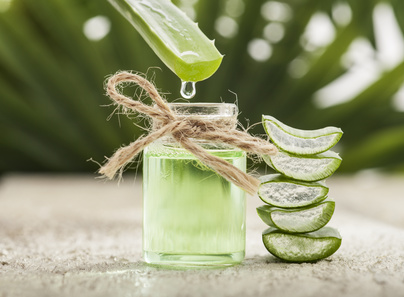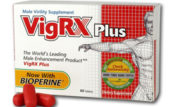 Gen Xers and their parents might best associate chia seeds with the Chia pet: a delightful figurine designed with chia seeds that sprout ‘hair’ or fur. There was a chia kitten, a puppy and even a Garfield and Mr. T. Now a new generation gets to join the fun, with a Chia Shrek, a SpongeBob, and even a Chia pet Barack Obama.
Gen Xers and their parents might best associate chia seeds with the Chia pet: a delightful figurine designed with chia seeds that sprout ‘hair’ or fur. There was a chia kitten, a puppy and even a Garfield and Mr. T. Now a new generation gets to join the fun, with a Chia Shrek, a SpongeBob, and even a Chia pet Barack Obama.
Oh yeah, bring one of those bad boys to the office and you’ll be the life of the party!
Yet amazingly, chia has practical applications (more than a Chia Newt Gingrich? Perish the thought). Yes, it’s hard to believe, but the Aztecs did things with chia other than grow hair with them in adorable little characters that never get old. They ate chia, for example. And maybe you should too.
Chia seeds are loaded with nutrients. They’re low in calories and high in fiber, making them useful for people with digestion problems, pregnant women, weekend warriors, athletes, vegetarians, diabetics, anyone who’s trying to lose weight, lower cholesterol, blood pressure and more.
Admittedly, the term ‘superfood’ gets thrown around in today’s busy yet health-conscious society, but chia seeds deliver some mighty credentials. Let’s look closer at salvia hispanica and whether YOU should add them to your daily regimen.
What is Chia?
They’re not just rumors spread by the marketing department: evidence shows the Aztecs cultivated chia 3,500 years ago. A flowering shrub native to southern Mexico and Guatemala, the Aztecs prized chia for the stamina and energy it provided, and even offered it as an annual tribute to their rulers.
Fast forward a few thousand years and we’ve swapped human sacrifices for the kind we make to our health. Enter chia, which emerged from relative obscurity and quickly hit magazines and health stores as the superfood for cool folks.
Chia seeds are mild, with a slightly nutty flavor and highly adaptable to pretty much any recipe you can think of. But it’s those crazy levels of nutrients that should be of interest to you. And believe me, they’re crazy indeed. Among other things, chia boasts:
100% more omega-3 fatty acids than salmon
twice the antioxidants in blueberries
six times the calcium in milk
41% of your daily fiber requirements
six times more iron than in spinach
64% more potassium than in a banana
Chia seeds are a complete 16% vegetable protein, 31% fat and 44% carbohydrate. Health nuts shouldn’t worry about the hit to their blood sugar though, as 38% of the latter is digestion-friendly fiber.
 And a few more numbers to chew on: chia packs more than 27 essential vitamins, minerals, amino acids and fatty acids in one tablespoon that, at roughly 41.25 calories, won’t hurt the waistline.
And a few more numbers to chew on: chia packs more than 27 essential vitamins, minerals, amino acids and fatty acids in one tablespoon that, at roughly 41.25 calories, won’t hurt the waistline.
Who Should Eat Chia
A little chia goes a long way. And for today’s time-starved average Joe, who gets only 12-15 of the American Dietetic Association’s recommended 20-38 grams of fiber each day, there’s a good argument to label chia with an oft-used buzzword in the health community: superfood.
But the real value of chia may be its versatility. Chia offers high fiber and nutrients in few calories consumed. This makes it of interest to just about anyone who wants to eat better and get the essential vitamins and minerals required for specific concerns, including:
Athletes – The Aztecs gave chia to their messengers to fuel their marathon journeys through the mountains. Modern athletes should consider chia for its high carbohydrate levels.
Diabetics – Your body takes longer to convert carbs from fiber into sugar. In turn, this helps maintain stable blood sugar levels and reduce the chance that a “crash” will hit. Chia seeds have also shown to reduce cardiovascular risk factors in people with well-managed diabetes type 2.
People at risk of heart disease – Speaking of cardiovascular risk, heart disease kills more Americans than any other ailment – and it’s often preventable. Aside from lifestyle factors, a diet rich in omega-3 fatty acids is proven to reduce risk of heart attack and high blood pressure.
Pregnant women – A bun in the oven requires nutrients-a-plenty, like fatty acids, protein, fiber, minerals and antioxidants. You’ll get lots of those in chia, and it’s easy to incorporate into your diet, even if you’re suffering from morning sickness.
Vegetarians – A meat-less diet has some advantages, but it often costs protein, calcium and essential fatty acids. You might be encouraged to hear that chia offers nine essential amino acids and a complete vegetable protein. No meat required.
Chia packs more than 27 essential vitamins, minerals, amino acids and fatty acids in one tablespoon that, at roughly 41.25 calories, won’t hurt the waistline.
Patients with digestion problems – Fiber, fiber and more stomach-friendly fiber. Chia seeds are an excellent source of soluble fiber and make an effective anti-inflammatory. As well, the vitamins and minerals in chia promote health of the GI tract.
People who want to look good – Omega-3 fatty acids are good for your heart and your brain. But they’re also good for your hair and your skin likes it too.
Folks on the go – Not enough time to eat a healthy breakfast? Make a chia-pudding: three teaspoons chia with a cup of your favorite juice, for a fast, convenient powerhouse of nutrition.
Children – Sneak chia seeds into your kids’ cereal – they probably won’t even notice it because chia tastes so mild. A great way to ensure they’re getting proper nutrition to start their day.
Chia For Weight Loss
Yet perhaps chia’s best known application is for weight loss. Chia seeds absorb up to 12 times their weight in water. In theory this means that chia satiates your hunger with few calories consumed.
 You’ll encounter different opinions about chia and whether it can help you safely lose weight. This article at WebMD cites a study performed at Appalachian State University, in which researchers found no evidence of significant weight loss over 12 weeks.
You’ll encounter different opinions about chia and whether it can help you safely lose weight. This article at WebMD cites a study performed at Appalachian State University, in which researchers found no evidence of significant weight loss over 12 weeks.
Now the other side. Many in the health community swear that chia helps with healthy weight management because it’s so filling. People feel like they’ve eaten plenty with chia – that’s fiber in action – when in fact they’ve eaten much less than they would otherwise.
This contributor to Yahoo suggests eating chia seeds for breakfast and before each meal. You’ll start your day off with a nutritional wallop this way and will be less likely to overeat. Drink plenty of water and you’ll have energy to sustain you throughout the day and, as the writer claims, may shed a few pounds while you do it.
Whether or not you believe the chia weight loss claims, or that it can help you lose 7 pounds in 14 days, even the WebMD article that shoots down this theory suggests that chia is a welcome addition to the average diet. It’s a healthier alternative to refined grains and has even more antioxidants than blueberries.
Speak with your doctor if you have specific health concerns, including allergies to sesame or mustard seeds, or if you’re on high blood pressure or blood thinning medications before eating chia. Otherwise, the current research on chia is that it’s fairly well-tolerated.
How to Use Chia Seeds
So you’re bitten. You want those crazy levels of nutrients and a (purportedly) easy way to lose weight?
First, you’ve got to buy chia. You can get it at some health and grocery stores, though it’s of varying quality. Digestive Science also offers chia as part of their line up of natural digestion supplements, and consumer reviews indicate their chia is good.
And more good news. Chia has a mild flavor that blends well with other ingredients. Try these chia recipes and learn how easy it is to get superfood nutrition with ultra convenience.
As an egg substitute – You can swap eggs with chia for many recipes. Mix one tablespoon of ground chia and three tablespoons of water in most baked recipes. One exception: don’t to this if you’re making an omelette.
Healthy chia pudding – Building on the chia pudding mentioned earlier in this article (simply add chia to your favorite juice), if you have time, you’ll love eating this healthy chia pudding. You’ll need:
2 cups of coconut or regular milk
½ cup chia seeds
2-3 tablespoons cocoa powder (optional)
1 tablespoon or more of your favorite sweetener – honey works well
Directions: put all ingredients in a blender and blend until smooth. Put in the fridge for about ten minutes and eat when it’s thick.
Feel free to mix and match ingredients with this recipe too, like swapping the vanilla and cocoa for strawberries, or nutmeg.
To thicken soups – Add a few tablespoons of chia seeds to soup or broth to get your desired thickness.
Chia sprouts for salad – The same mechanism that makes your chia pet look so darned cute makes a great compliment to your salad dishes. Add chia seeds to water, then drain the water and put in a jar for about two days. Rinse them with water and drain again, about every 12 hours. You’ll have chia sprouts in about two days.
You can also go to shape.com for more chia recipes complete with yummy images of just how awesome chia can be when added to your daily ritual.




